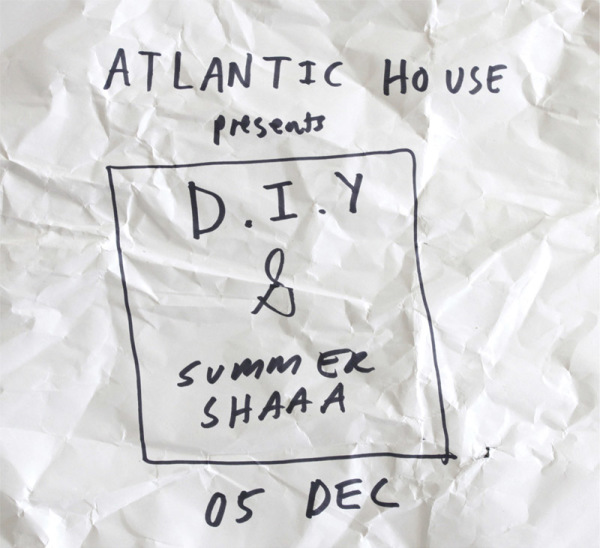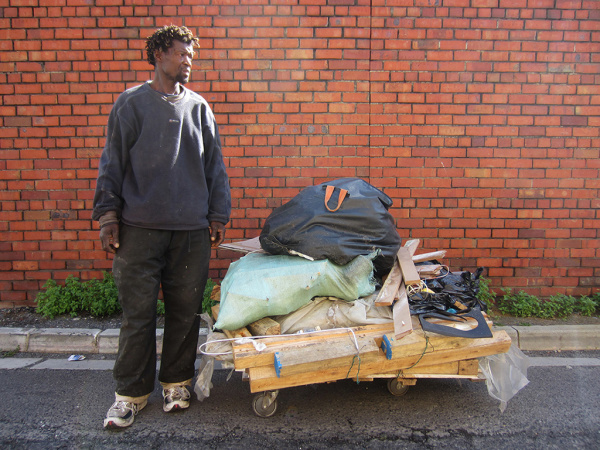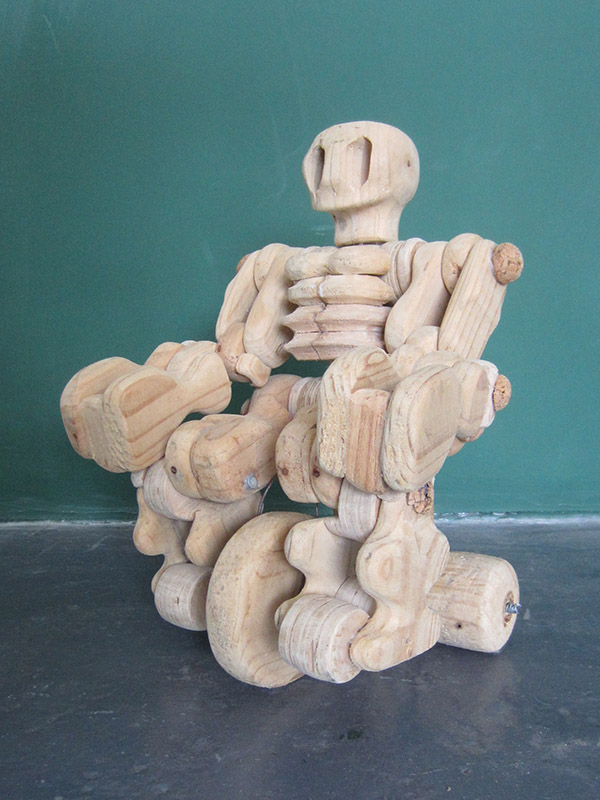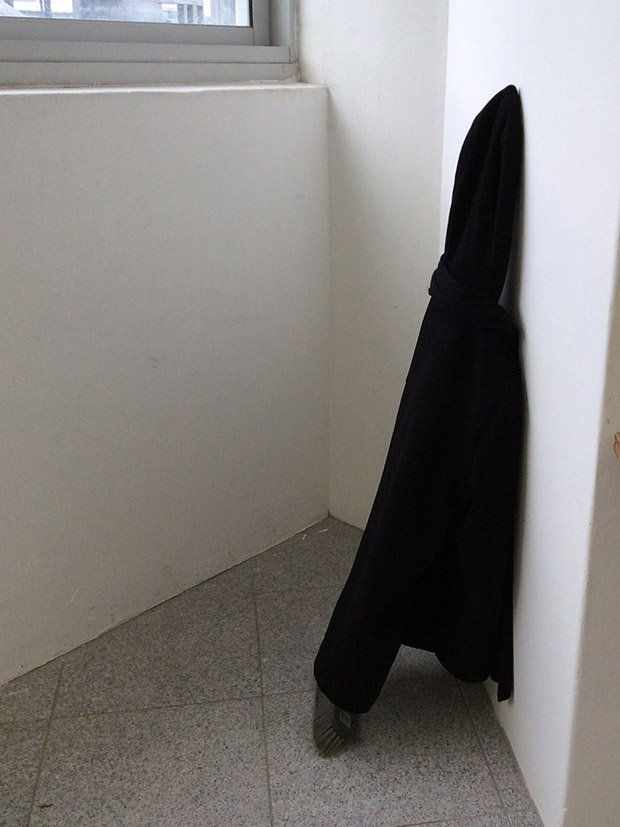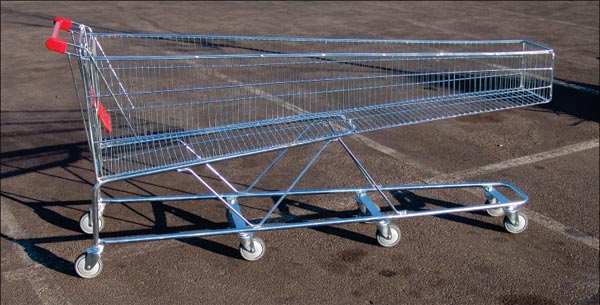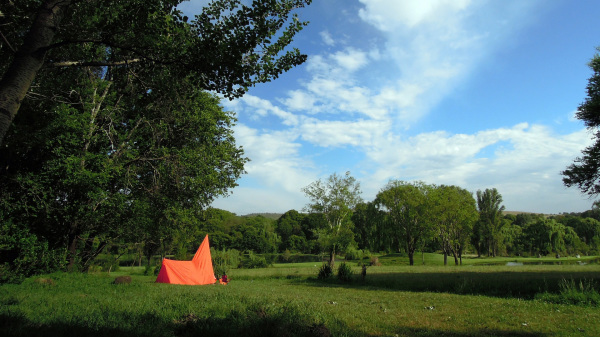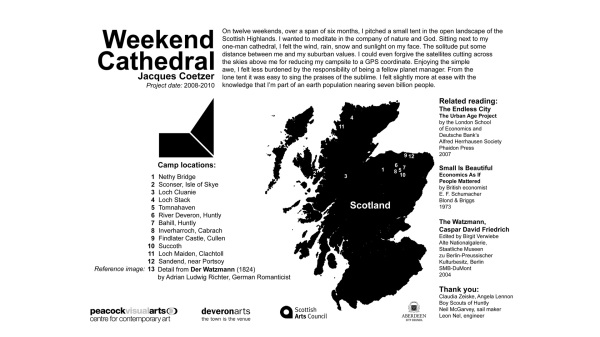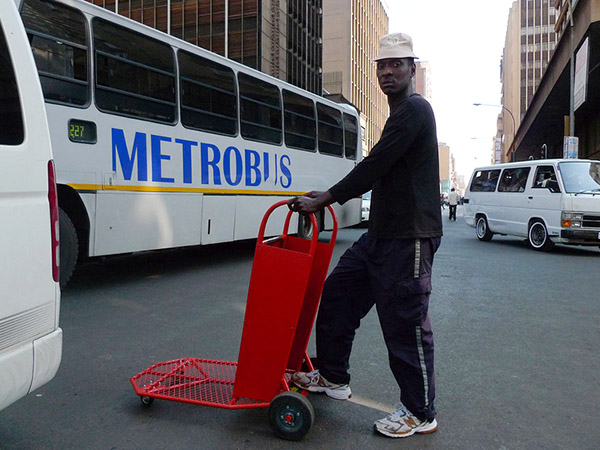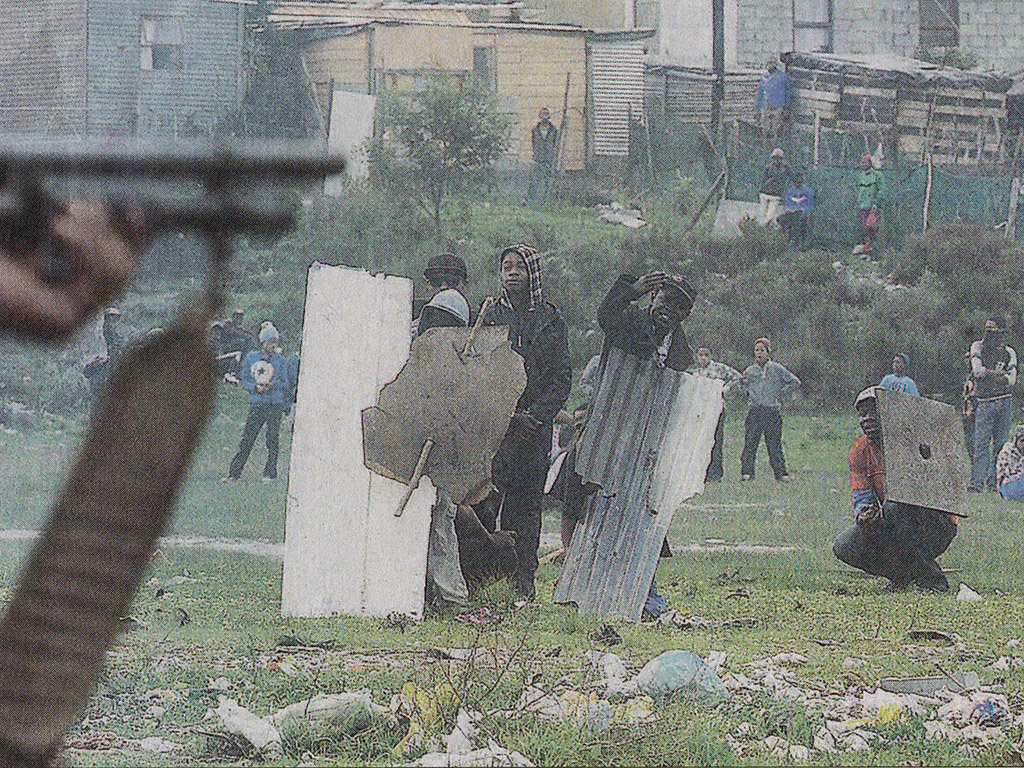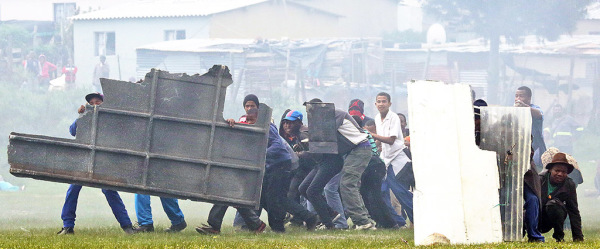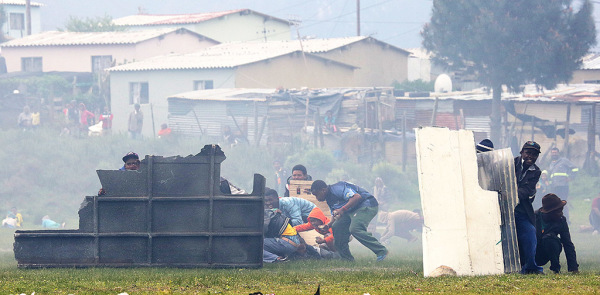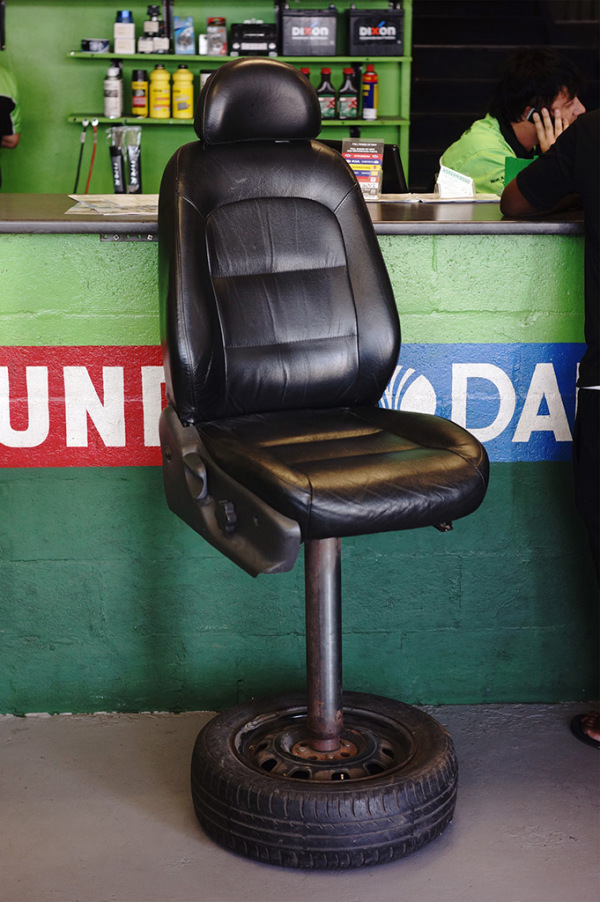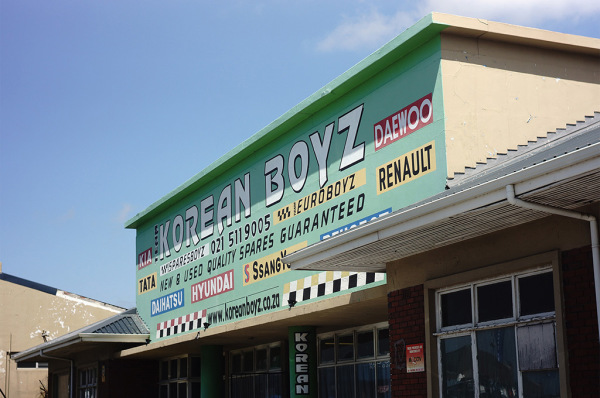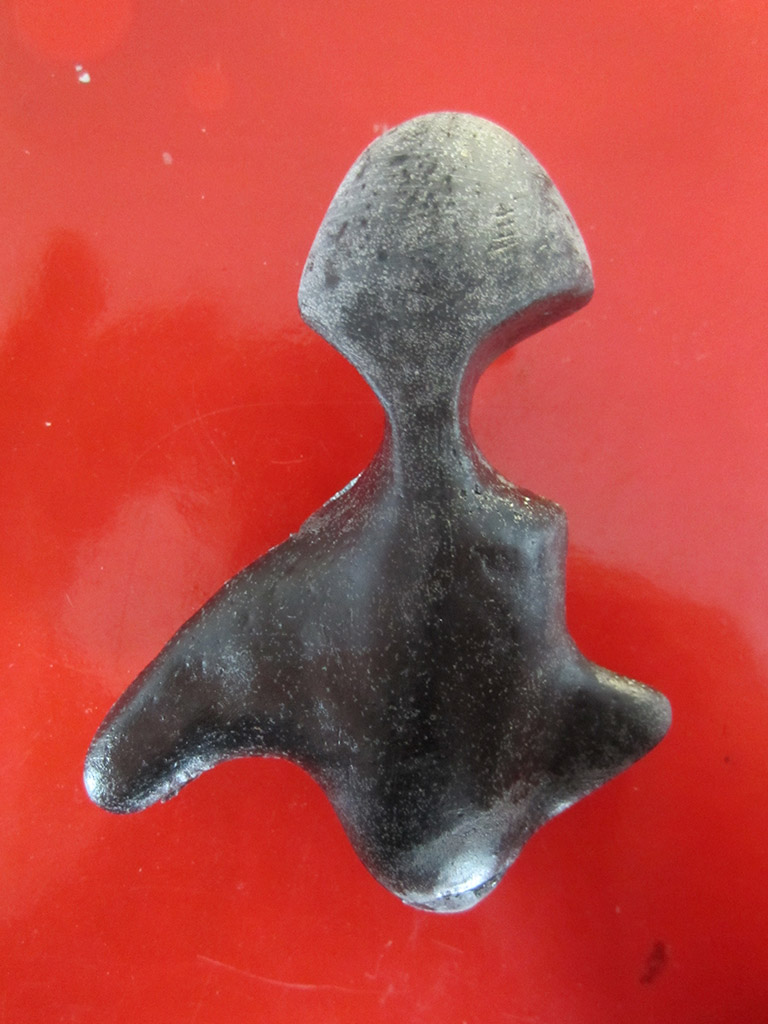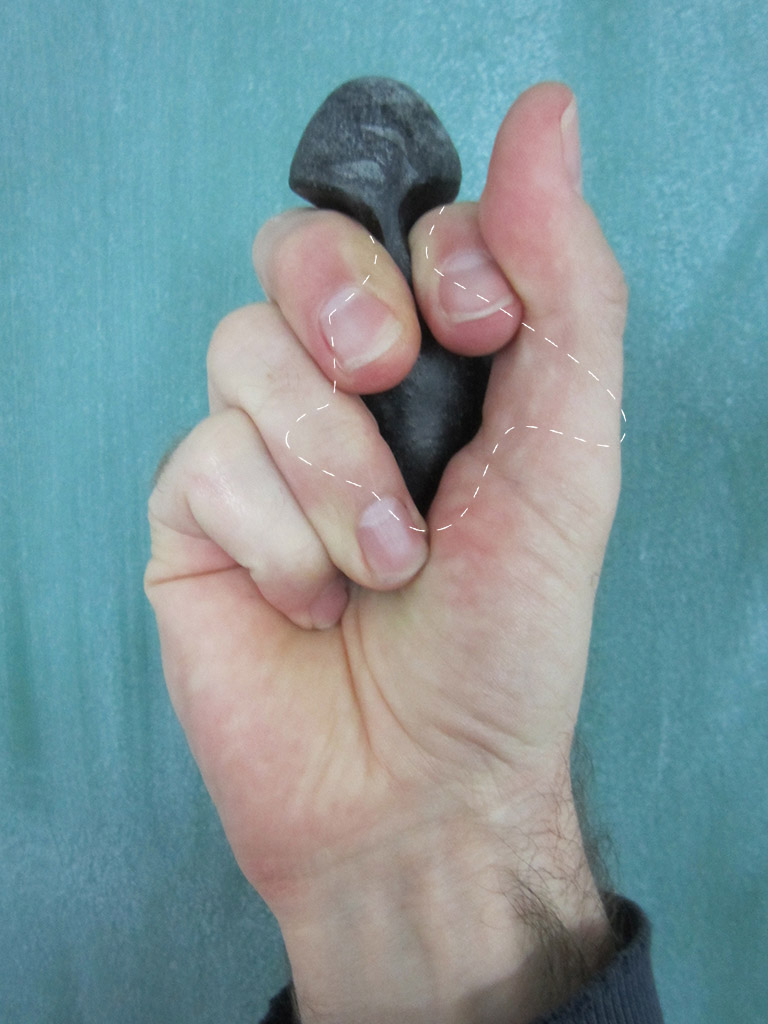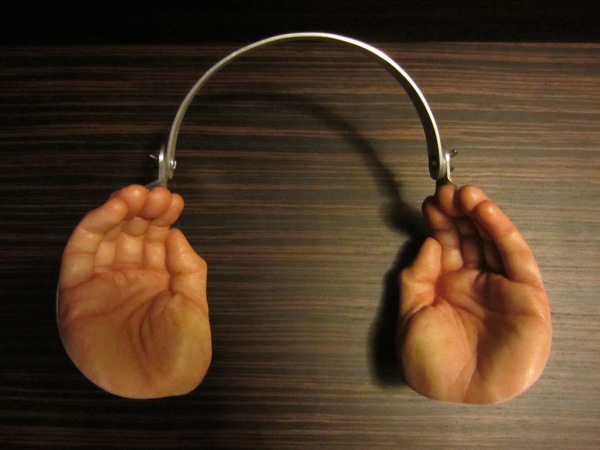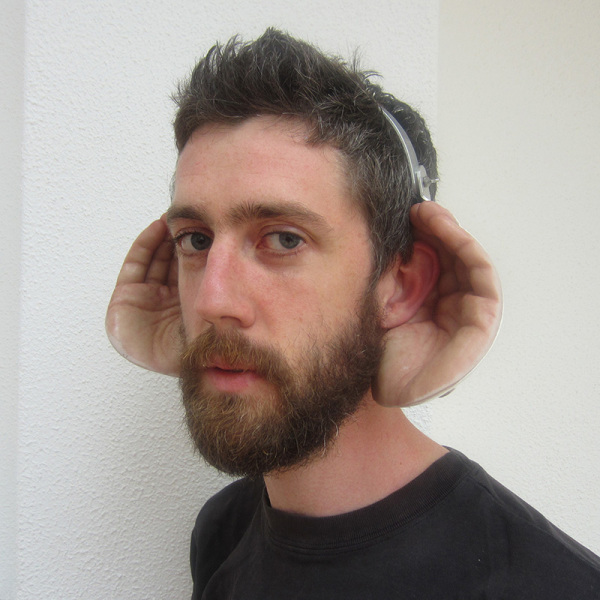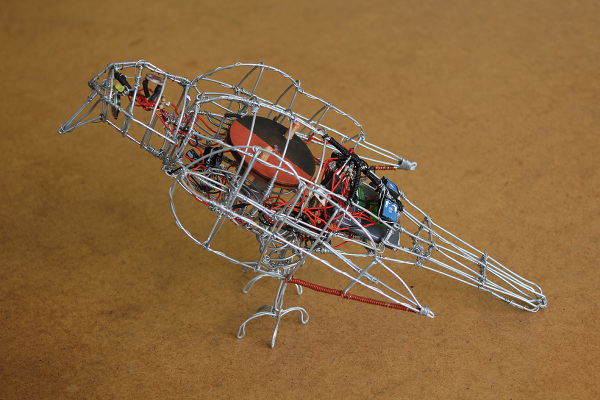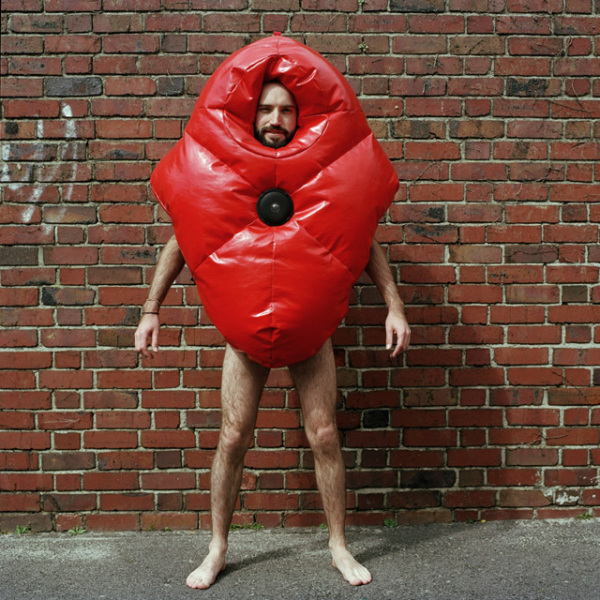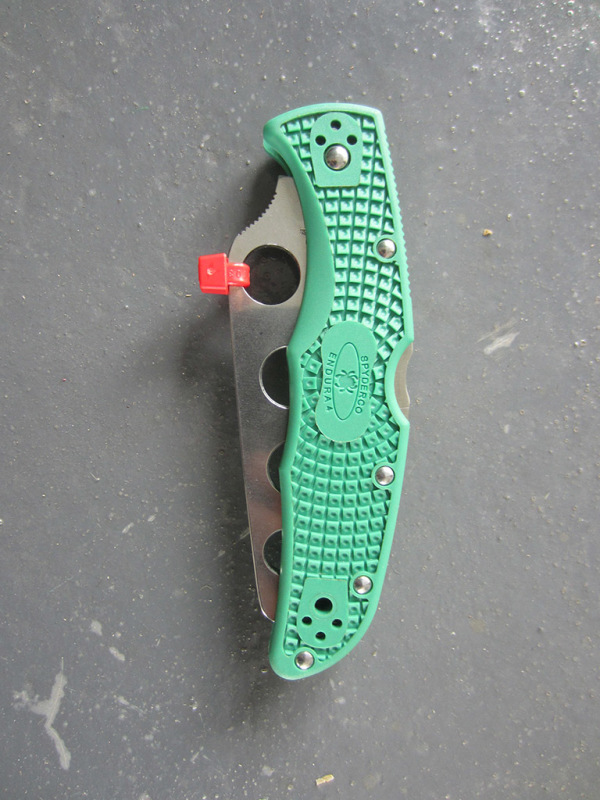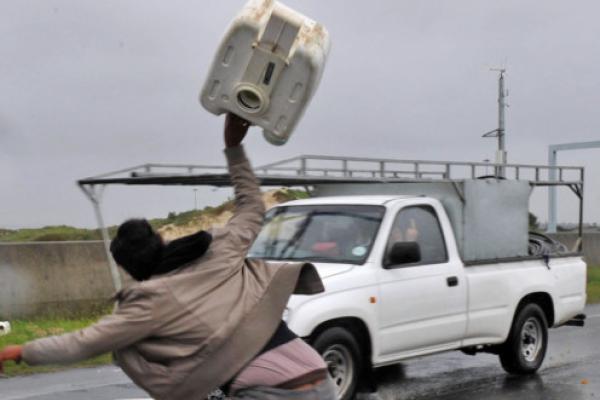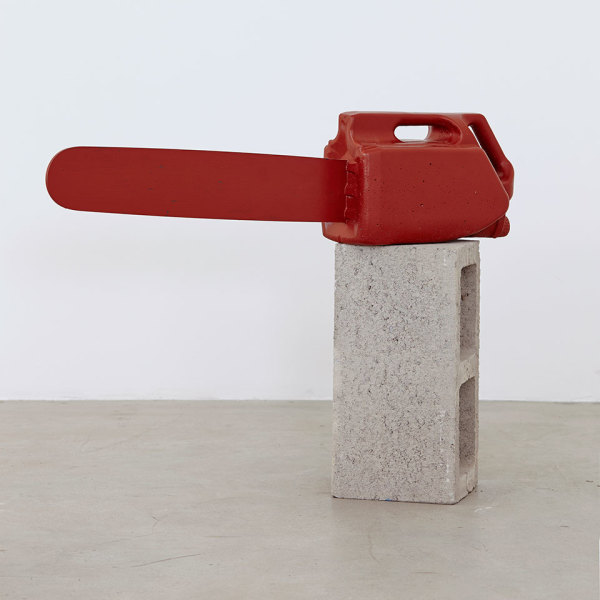DIY curator Ralph Borland made a presentation about DIY to officially launch the project, at 6.30pm on Friday 5 December 2014 at Atlantic House, 1 Perth Street, Maitland. The presentation was followed by Summer Shaa, an absolutely nice party featuring blockbusting DJs Little Jonny, Gary Reuben Morris, DJ Warm-Porridge and Pawel “the human Swiss pole” Ferus. Also an artwork by Matthew King. See atlantichouse.co
Author Archives: DIY
Objects
DIY is looking for documentation of functional objects made by amateurs, artists and designers from South Africa for an exhibition and online archive. Please read the call for submissions for more about the kind of work we’re looking for. The model for submissions is to photograph the object, and capture the name, a portrait, and contact details where possible of the maker, whether yourself or another person. You should also record a brief explanation of how the person came to make this object, in their own words: what motivated them, what choices they made, what materials they used and what circumstances they were responding to.
Man-shaped bin
Michael Yeltsin is a homeless man from Bloemfontein, living in Cape Town. He salvages wood from the streets and uses it to make objects that he sells by the side of the road. This piece is intended as a ‘bin’ – the head is attached to a lid that lifts off the body. I asked him to tell me more about why he made it, below – Ralph Borland, 2014
It’s because I want money – I’m looking for money. I made it like this because I think someone will love it, the shape – this corner, corner, corner like this. Maybe somebody will understand it. The shape is like a man. [The holes] are like a joke – just a joke.
Skeleton robot tricycle toy
Broom/coat-hook
Hypershopper
‘Hypershopper’ is both wordplay and an object, an exaggerated tool to serve intense consumerism. It was born from my personal experiences in a generic suburban setting, playing the role of father, breadwinner and grocery shopper. The idea has appeared elsewhere too: contemporary artist, Maurizio Cattelan made a very similar stretch trolley in Italy, titled ‘Less than Ten Items’ (1997).
– Jacques Coetzer, 2014
Weekend Cathedral
‘Weekend Cathedral’ is a two-man tent with a simple spire added and was invented for camping excursions outside of the city – A temporary shelter in the great outdoors that revives the spirit. These photos were taken during such a weekend with my son in the Cradle of Mankind, near Johannesburg. I also pitched the Weekend Cathedral in the Scottish Highlands over a number of weekends and changing seasons.
– Jacques Coetzer, 2014
Trolley Works
Ismail Farouk’s Trolley Works is a multi-disciplinary art project, which seeks to regulate trolley-pushing activity in downtown Johannesburg. The project was initiated as part of the Sylt Quelle Cultural Award for Southern Africa 2008. The first phase of the Trolleyworks project began in December 2008, and was proposed to run until May 2009. You can read about the project in this chapter of the African Cities Reader ‘Planning for Chaos – Urban Regeneration and the Struggle to Formalise Trolley-Pushing Activity in Downtown Johannesburg‘ (2010).
Clothes-peg spectacle arm
My daughter when she was 18 months old was sitting on my lap at my desk when she grabbed my glasses and viciously twisted them while smiling at me, breaking off the arm and bending it to such angle as to render it useless. She was into pegs at the time and had a few pegged to her dress. We entered into a negotiation which culminated in the deal – an arm for a peg.
– Eddie Edwards, Johannesburg 2014
Protestors’ shields
The image above is cropped from a photo by Courtney Africa published in the Cape Times on Wednesday 17 September 2014, p.4, showing young protestors in Grabouw during service delivery protests which saw 5 schools closed. They hold improvised shields. At left is the gun of a policeman – police fired rubber bullets, and protestors threw stones. Courtney supplied the archive with some more photographs, below, and this comment:
In the picture above the guys were shielding stone throwers. Others would roll stones/rocks to them from further behind as the materials for making ‘shields’ seemed scarce.
Fence
The process I undertook during 2005 was the production of nine separate sections of chain-link fence fabric. Each section measured 2,4 x 0,8 meter and was made with wire ranging from 0.3mm to 0.6mm. The work was produced using as little mechanical interventions as possible, resulting in a low-tech time and labour intensive process. The tools utilized: masking tape, long-nose pliers, hammer, hand-punch, electric-drill, tape measure, two sets of gloves (PVC coated/ cotton), more than 4 kilograms of nails (1,6mm x 25mm and 2mm x 32mm), 1,5mm drill bits. The majority of these tools were used to construct a “loom” that was necessary for weaving the fence.
On individual authorship of work – to me the work became a personal and isolating process. The idea is of manual mass production or more specifically, individualizing a process that is commonly mechanized. Solely I undertook the process to produce the end product. The reason being that the toil and labour of a single individual has an interesting effect on the viewer’s perception of the output. This idea of “relative magnitude” in effect forces it to read differently than one would have that of work produced by a group. The exception is certain things like the materials which had been purchased: the purchase of wire, nails, Masonite board was necessary as there would not have been enough time to personally manufacture each, although it would have added an interesting element if I had single-handedly done everything.
The idea of the machine-made to the man-made: imperfections remove it from the realm of machine-produced to the hand-made. Constructing the wire-mesh myself has allowed for the possibility of the object being visibly not machined. Deviations from the diamond-mesh pattern of chain-link fencing is seen both to animate the surface and allow re-enforcement of fabric in weaker areas.
– Fabian Saptouw, 2014
Polen Tasche
These cheap Chinese-made plastic-weave bags have become almost synonymous with refugees and poorer migrants the world over, much like the carpet-bags of centuries gone by. Today the movement of these people is as contentious as ever.
The bags are frequently named after the most common immigrant demographic in an area. They are colloquially dubbed things like: ‘Ghana must go’ in Nigeria, ‘Turken Koffer’ or ‘Polen Tasche’ in Germany, ‘Guyanese Samsonite’ in the Caribbean, ‘Bangladeshi Bag’ in the UK, and ‘Shangaan or Zimbabwe Bag’ in South Africa.
– Dan Halter, 2014
Street cleaning scoop
Photographer and major contributor to the DIY project, Nic Grobler, captured this example in Cape Town of the ubiquitous dustpan made from a cut-down plastic jerry can or other vessel. Workers like municipal road sweepers in South Africa often seem to prefer to make their own dustpans like this instead of using mass-produced ones. The sweeper who made this one, Khulile Mfuno, said:
This is the second one I made. It is perfect, especially for picking up dirty stuff. It is just a piece of wood and and half a bucket tied up with a wire. I’d like to make more things, but most of the time I don’t have time you see.
– Khulile Mfuno, 2014
Car seat counter chair
Nic Grobler captured this counter chair made from a car seat at auto spares shop Korean Boyz, on Voortrekker Road in Cape Town. Auto mechanic Hennie Swart who made it, along with other projects from salvaged materials, had this to say about it:
They look very beautiful with nice mags. I haven’t painted it yet – it is an expensive project. The whole thing as it stands there is R1,500. If we add it up, including the seat (which we can sell for R500) it becomes a lot. I also have a top loader washing machine [drum] that I turned into a braai – it is the best braai you can get. Especially with all the little holes in the side it is great for wind.
– Hennie Swart, Korean Boyz, 2014
Ergonomic massage tool
I designed this ergonomic tool while I was an art student in 1996, as part of an exploration into shapes that are formed by or respond to natural forces. This tool is based on the principle that you should keep your wrist in as straight a line as possible, rather than flexing it to the side as you do with conventional tool grips, like a screwdriver for example. A friend at the time was studying physiotherapy, and I made this tool for her to use for precision massaging of bulky sportsmen. This is a recast replica.
– Ralph Borland, 2014
Handy Ears
Handy Ears is a prototype for a piece of apparatus to enhance the wearer’s hearing. Casts of my hands, rendered in silicon rubber by special effects and prosthetics fabricator Tristan Versluis, cup the wearer’s ears to amplify and direct sound. Based on the experience of this familiar action’s effect on one’s engagement with the environment, this tool leaves the hands free, and invites associations between the whorls of the ear and the folds of fingers and palms, cupped hands and parabolic reflectors. Echoing headphones in form, the piece suggests a gentler enhancement of listener experience.
– Ralph Borland, 2014
Starling
Starling is the first prototype in my project African Robots, a project to create interactive electronic street art. ‘Street art’ in this instance means art sold by people on the street, in South Africa – usually forms of handicraft using inexpensive materials like fencing and electrical wire, beads and waste wood, plastic and metal. I’m particularly interested in wire work, where artists make three dimensional forms from wire. It’s a very economical use of material to define a form. The first prototype is a mechanical starling, a common urban bird in Cape Town. Running on a Nokia phone battery, it incorporates a sound-synthesizer whose pitch depends on light exposure, glowing LED eyes, and head and wing movement via a cheap hacked motor and handmade gear.
– Ralph Borland, 2014
Suited for Subversion
Suited for Subversion is a project to create a suit that protects the wearer at large-scale street protests. The suit also monitors the wearer’s pulse and projects an amplified heartbeat out of a speaker in the chest of the suit. I designed and fabricated the first prototype of the suit as part of my Masters Degree in the Interactive Telecommunications Program at New York University. The project draws on my work as an activist involved in street demonstrations in New York, and is influenced by the work of other activists and demonstrators who wear protective clothing and make creative use of tools and technologies for protest. As much as my suit is armour, it is also disarming; as much provocation as protection. Suited for Subversion was part of the exhibition SAFE: Design Takes on Risk at the New York Museum of Modern Art in 2005/2006. The first edition was purchased by the Museum in 2006.
– Ralph Borland, 2014
Cable tie knife mod
Hadidas Peerbal
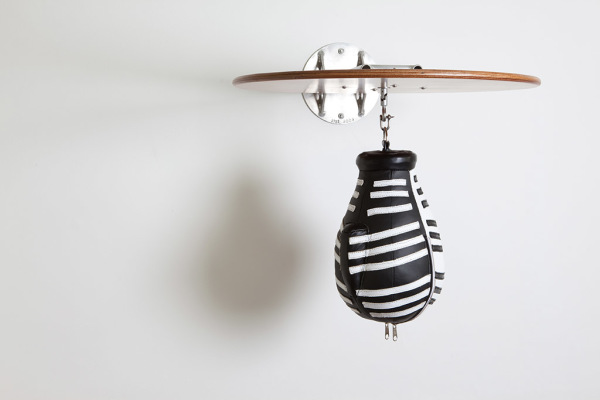
‘Hadidas Peerbal (Hadidas Pear Ball)’, 2010, aluminium, stainless steel, plywood, tanned leather, stuffing, 90cm wide x 66cm high x 38cm deep
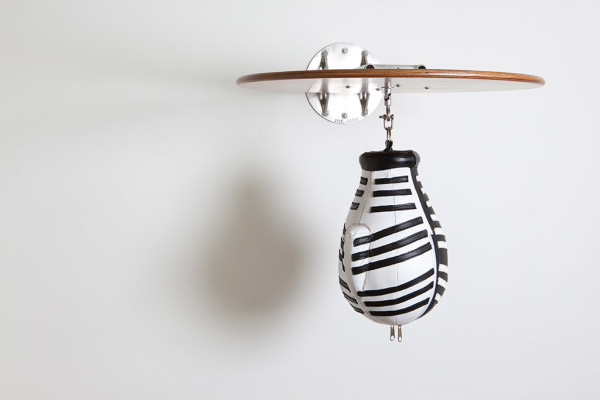
‘Hadidas Peerbal (Hadidas Pear Ball)’, 2010, aluminium, stainless steel, plywood, tanned leather, stuffing, 90cm wide x 66cm high x 38cm deep
Johann van der Schijff’s research interests are in the areas of computer-aided design and manufacturing techniques and the design of interactive systems. Growing up in South Africa, questions of power relations in society underlie much of his work, forcing the viewer into a position of choice in their engagement with his artworks. His work has been concerned with the effects of apartheid and the pervasiveness of violence that continues in its wake. Central to his exhibitions has been the presence of interactivity as he tempts his viewers to interact with his sculptures even as they realise such interactions are suggestive of aggression and complicity in violence.
– Johann van der Schijff
Rapex anti-rape device
The Rapex (later called the Rape-aXe) is a prototype anti-rape device invented by South African medical technician Sonette Ehlers. Ehlers proposed to distribute 30,000 of the devices in South Africa during the 2010 World Cup and hoped to make them available for sale after a “trial period”, but there no indication that the product has ever been released to vendors, according to Snopes.
Porta potty protest
In 2013 a series of protests took place in Cape Town that used ‘porta potty’ canisters filled with human waste, as a protest against the portable toilets supplied by the Cape Town municipality in informal settlements and for higher levels of sanitation. The porta potty canister became a tool of protest as human waste was flung “at Premier Helen Zille’s convoy, on the N2 highway, on the steps of the Western Cape Legislature, in the Cape Town International Airport departures terminal, and… at the Bellville Civic Centre. These poo protests targeted the Western Cape government’s sanitation policies” (from University of Stellenbosch academic Steve Robbins’ article ‘How poo became a political issue’,
Chainsaw
Driving around the streets of Harare you are bound to notice various incarnations of the roadside tree-feller sign. The predominant form of this signage is an empty 5L oil container with something roughly resembling a chainsaw blade sticking through the base. The resemblance to a real chainsaw is excellent and I always admire these handmade sculptures for their effective use of discarded material.
Incorporating this DIY sign into my work, I remade the object out of concrete and steel, giving the sculpture some weight, conceptually and physically.
– Michele Mathison, 2014
